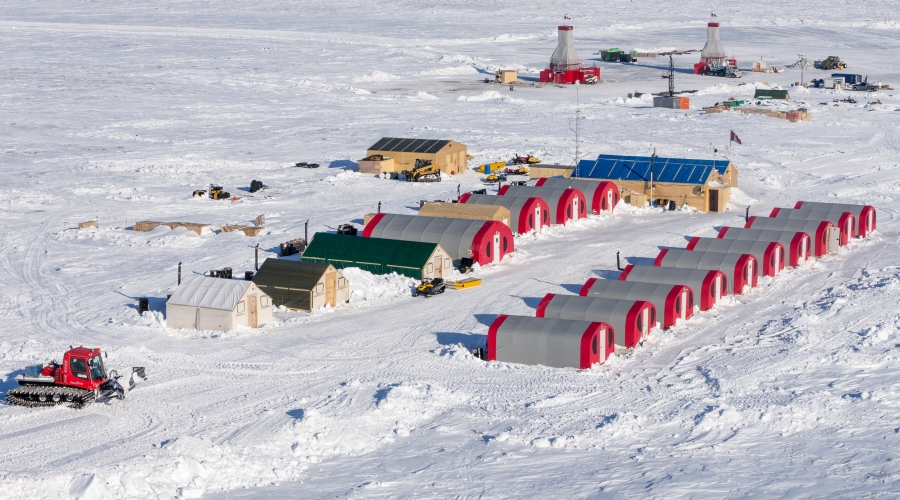
Mineral Exploration Camps
Geophysical exploration does not have the luxury of choosing its location. It goes to the minerals and not the other way around. Increasingly, this exploration is being taken to areas previously unexplored due to the remote nature of the locations. While there is a large profit margin to be had, an inconvenient locale can create numerous problematic situations that you should be aware of should you choose to undertake such a venture.
The first thing that must be considered with remote sites is that they are often difficult due to the limiting factors of daylight and weather. In the field sites of Northern Canada, for example, there is only a working schedule from mid-March to October, as that is the only time of year when above-freezing temperatures and exploratory drilling is even possible. This is also the only time of year with sufficient daylight to conduct research. Depending upon what the researcher needs done, this exploratory window may be even smaller.
The last thing that you want to be worried about during this brief period of availability is infrastructure. These mineral exploration field camps require numerous other buildings in addition to the sleeping quarters of the researchers and the staff, for everything from offices and research facilities to showers and catering. The harsh weather must also be taken into account if these structures are to withstand the entire season so as to not cause delay through repairs. Fabric structures serve to make the set-up process quick and easy, while also proving cost effective and durable in a climate where repairs could cost you valuable research time. The best fabric structure companies can even help with the installation process if you find that you don’t have the expertise or time to do it yourself.
Site management is key to the success of remote exploration. Unlike more southern sites, these northern field camps are often isolated from the southern road network. Equipment becomes more challenging to procure and move, oftentimes requiring a trip either by sea or air. Boats may only ship out a few times a year, contingent upon weather, whereas helicopters and planes are limited by landing space and tend to be much more expensive, up to $1000/hour or more with all fees included. Additionally, after all of the equipment and pre-planning is done, the actual field logistics set in.
Well-connected work sites allow the researchers to do much of the work in the camp itself, but remote sites make camping that much more difficult, so it is often necessary to hire extra staff to manage the camp site. There are companies that hire out experienced teams to do exploration management services, such as the teams of Alaska Earth Sciences, which include positions anywhere from cooks and pilots to the management of transportation and personnel on the site. This outsourcing allows the geologists to focus on the objective at hand.
When looking into geophysical exploration, specifically in reference to remote site management, you should be sure to look at all the setbacks that may affect your team so as to understand how you may remedy them. Infrastructure and field logistics differ greatly from the standard exploration site, so you should consider pre-made teams and structures to save you both time and money, so you can focus on what is really important: the research.